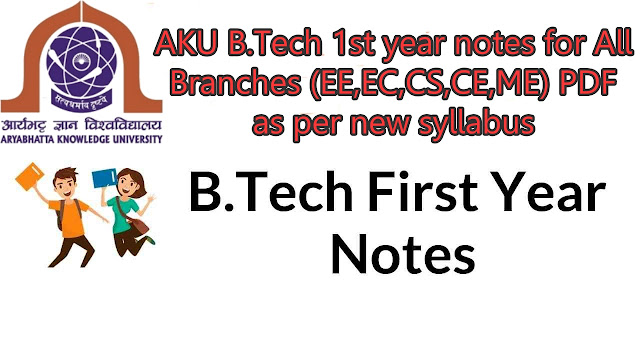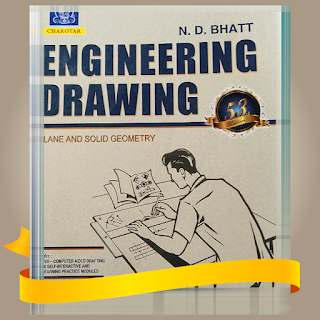NPTEL Introduction To Internet Of Things Assignment 5 Answers 2023 (July-Oct)
The Internet of Things (IoT) has emerged as a game-changer. NPTEL's Introduction To Internet Of Things Assignment 5 (July-Oct) delves into various aspects of IoT, offering insights into Interoperability, Arduino programming, and the integration of sensors and actuators. This article is your ultimate guide to understanding these concepts and acing your assignment.
NPTEL Introduction To Internet Of Things Assignment 5 Answers 2023 (July-Oct): Interoperability in IoT
Interoperability is the cornerstone of IoT, enabling diverse devices to communicate seamlessly. It's the ability of different systems, devices, or applications to connect, exchange data, and work harmoniously. In the context of IoT, interoperability ensures that a plethora of devices, sensors, and actuators can collaborate effectively, driving efficient operations across various domains.
NOTE:- Answers will be updated shortly and it will be notified in our Youtube & Telegram Group. So Join Now
👉
Click Here To Get Solution
With respect to the scenario described, the correct answer is:
b. Heterogeneity of IoT
Semantic conflict in IoT interoperability refers to:
d. Two devices having different processing and business logic
The issue that needs to be addressed while solving user interoperability is:
d. All of these
The UMB interoperability component responsible for converting physical devices into virtually abstracted ones is:
d. UMB Abstractor
A Protocol Translation Unit (PTU) acting as middleware for IoT devices with different protocols to communicate is:
a. True
The information "Configuration Lang:C++" for a smart CCTV camera's cosign identification would most appropriately map to:
a. A
Components of an Arduino UNO Board include:
d. All of these
The series of microcontroller chips powering Arduino UNO boards is:
d. ATMEGA series
In Arduino IDE, the 'Verify' and 'Upload' buttons do not perform the exact same task:
a. False
To read from a pneumatic sensor sending tyre pressure as floating point numbers, you would use:
c. analogRead()
The following Arduino sketch:
a. INPUT
To integrate different types of sensors (such as DHT) with Arduino, you need to install and #include the sensor-specific libraries in your sketch:
a. True
The command ServoDemo.write(180); best describes:
c. Servo moves 180 degrees
In an Arduino sketch, the default function void setup() is where:
b. Point where the code starts.
A relay, which is an actuator, can also be described as:
c. Electro-mechanical switch
Exploring Interoperability Challenges:
Interoperability in IoT is not without challenges. The diversity of devices, communication protocols, and data formats poses hurdles. Different manufacturers often use proprietary protocols, hindering cross-device communication. Standardization efforts like MQTT (Message Queuing Telemetry Transport) and CoAP (Constrained Application Protocol) are bridging the gap by establishing common communication protocols.
The Role of Edge Computing:
Edge computing plays a pivotal role in addressing interoperability challenges. By processing data closer to the source, it reduces latency and enhances real-time decision-making. Edge devices act as intermediaries, translating data between different protocols, facilitating seamless data exchange.
Introduction to Arduino Programming: Part I
Arduino, an open-source electronics platform, empowers both beginners and experts to develop interactive projects. This section introduces you to the basics of Arduino programming.
Understanding Arduino Boards:
Arduino boards are the heart of projects. They consist of microcontrollers, digital and analog pins, and USB interfaces. Arduino IDE (Integrated Development Environment) is the software used to write and upload code to these boards.
Writing Your First Arduino Code:
Arduino programming revolves around writing code called "sketches." These sketches are written in a simplified C/C++ language. An example of turning on an LED can be accomplished with just a few lines of code.
Power of Libraries and Functions:
Arduino's strength lies in its libraries and functions that simplify complex tasks. Libraries provide pre-written code for specific modules, while functions enable code reusability and organization.
Introduction to Arduino Programming: Part II
Building upon the basics, Part II delves deeper into Arduino programming.
Conditional Statements and Loops:
Conditional statements (if, else) and loops (for, while) are fundamental in programming. They enable decision-making and repetition, allowing your projects to adapt and respond to different scenarios.
Serial Communication:
Serial communication is vital for interacting with a computer. It enables data exchange between the Arduino board and a computer, making debugging and real-time monitoring possible.
Project Example: Temperature Monitoring System:
To illustrate the power of Arduino, consider a temperature monitoring system. By interfacing with a temperature sensor and a display module, you can create a device that reads and displays temperature data.
Integration of Sensors and Actuators with Arduino: Part I
Sensors and actuators are the eyes and hands of IoT systems. Part I focuses on integrating sensors to gather data.
Introduction to Sensors:
Sensors detect changes in their environment and convert them into electrical signals. Common sensors include temperature sensors, humidity sensors, and motion detectors.
Wiring and Interfacing Sensors:
Wiring sensors to Arduino involves connecting power, ground, and data pins. Libraries simplify reading data from sensors, making it accessible through your code.
Practical Application: Home Security System:
Imagine creating a basic home security system using Arduino and a PIR motion sensor. You can program the Arduino to sound an alarm when motion is detected, showcasing the integration of sensors in real-world scenarios.
Integration of Sensors and Actuators with Arduino: Part II
Part II explores actuators and the transformation of data into action.
Understanding Actuators:
Actuators are devices that perform actions based on received data. Examples include motors, servos, and LED displays. They allow your projects to interact with the physical world.
Controlling Actuators with Arduino:
Arduino outputs control actuators. By sending specific signals, you can make motors spin, servos move, or lights blink. This interaction between sensors, code, and actuators brings your projects to life.
Building a Smart Plant Watering System:
A practical application involves building a smart plant watering system using soil moisture sensors and a water pump. When the soil is dry, the Arduino triggers the pump to water the plant, showcasing the integration of sensors and actuators.
FAQs
How important is interoperability in IoT applications?
Interoperability is crucial in IoT as it ensures devices from different manufacturers can collaborate, leading to seamless data exchange and enhanced efficiency.
Can I learn Arduino programming without prior coding experience?
Absolutely! Arduino's simplified language and extensive libraries make it beginner-friendly.
What are some common actuators used in Arduino projects?
Common actuators include motors for movement, servos for precise positioning, and LEDs for visual feedback.
How can I explore more complex IoT projects?
Once you grasp the basics, you can explore IoT projects like home automation, environmental monitoring, and even wearable technology.
Are there online resources for Arduino programming and IoT?
Yes, platforms like Arduino's official website, online tutorials, and forums offer a wealth of information for both beginners and advanced users.
What's the significance of edge computing in IoT?
Edge computing reduces data transfer latency by processing information closer to the data source, improving real-time decision-making in IoT systems.
Conclusion:
NPTEL's Introduction To Internet Of Things Assignment 5 (July-Oct) opens doors to the exciting realm of IoT, Arduino programming, and the integration of sensors and actuators. By understanding the principles behind these concepts and their practical applications, you're equipped to embark on innovative projects that shape the future of technology.





